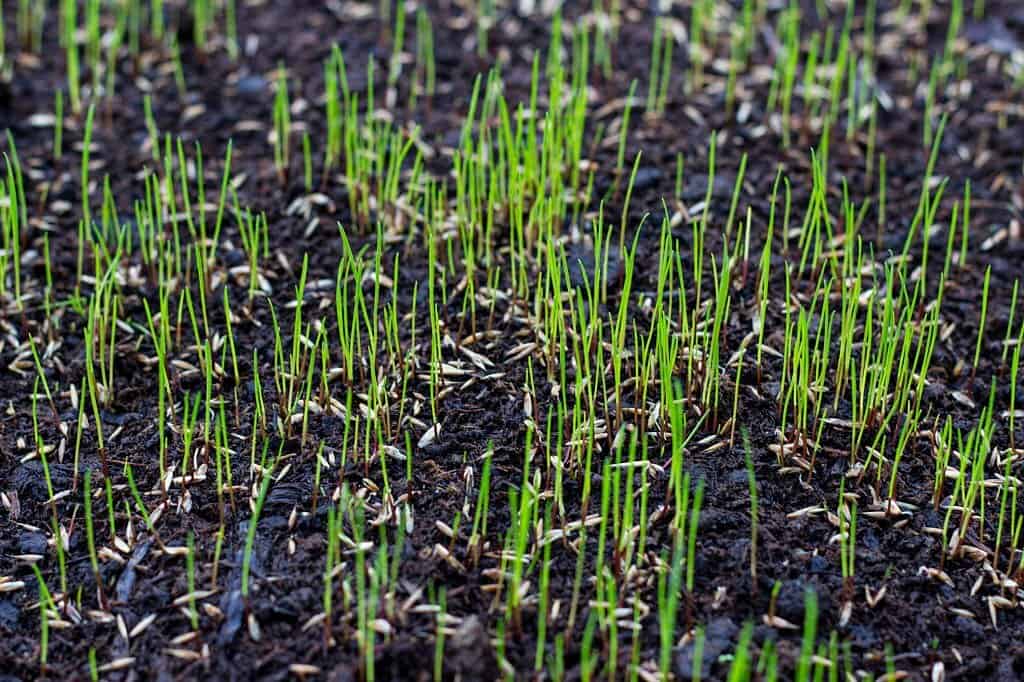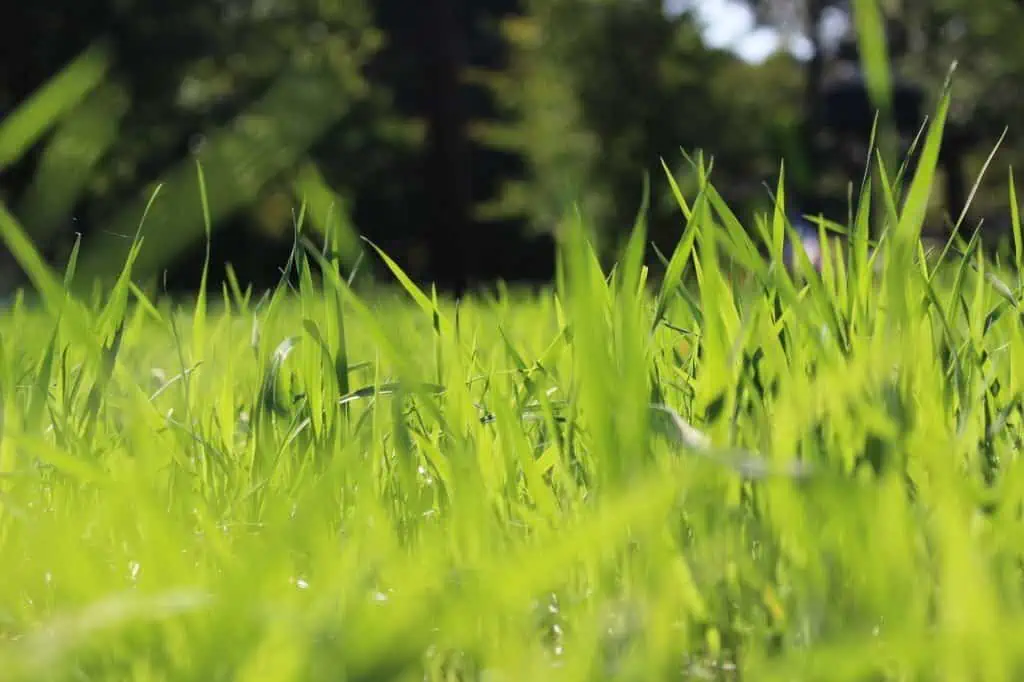Many homeowners are concerned about the height of their grass when it comes to maintaining a healthy and lush lawn. Whether 4 inches is too tall for grass is one frequent query. But the solution is more complex.
The type of grass, the temperature, and the general health of the lawn all affect the appropriate height for grass. Grasses generally do best when kept between 2 and 3 inches tall. However, other kinds, like fescue, can expand up to 4 inches without harm.
It’s crucial to remember that letting your grass become too tall can have adverse effects. It can leave your grass more vulnerable to pests and illness. Furthermore, tall grass might prevent the development of new shoots, resulting in a lawn that is uneven and patchy.
In this article, you will learn about the benefits of tall grass, the drawbacks of tall grass, and if four inches is too tall for grass.
Understanding Grass Growth

Understanding how grass grows is necessary before determining whether 4 inches is too tall for grass. One kind of plant that develops from the ground up is grass. The plant is anchored in the ground by its roots, which take in water and nutrients. A stem that rises above the roots supports the plant’s leaves and blooms.
By growing new shoots from the stem, grass expands. These fresh shoots, known as tillers, sprout at the stem’s base. Tillers develop new branches and leaves as they mature, eventually contributing to the development of the grass canopy.
Numerous variables, such as the type of grass, how much sunlight it receives, and how much water and nutrients it receives, affect the height of the grass canopy. Bermuda grass, for example, is naturally shorter and needs to be mowed more frequently to maintain its size. Fescue is one of the grass varieties that can grow taller and require less frequent mowing.
Best Height for Warm-Season Grasses
- Bermuda: 0.5 to 2.5 inches
- Buffalo: 1.5 to 4 inches
- Centipede: 1 to 2.5 inches
- St. Augustine: 1 to 3 inches
- Zoysia: 0.5 to 3 inches
Best Height for Cool-Season Grasses
- Fine fescue: 1.5 to 4 inches
- Kentucky bluegrass: 0.75 to 3.5 inches
- Perennial ryegrass: 0.75 to 2.5 inches
- Tall fescue: 1.5 to 4 inches
Is 4 Inches Too Tall for Grass?
After talking about the advantages and disadvantages of tall grass, let’s address the immediate question: is 4 inches too long for grass?
The reply is that it depends on your grass type and tastes. Fescue and Kentucky bluegrass are grass varieties that can grow up to 4 inches tall without any issues. Their height should be limited to 1.5 to 2 inches to maintain the health of other grass species, such as Bermuda grass.

Benefits of Tall Grass
Now that we know how grass grows, let’s look at the advantages of tall grass. Let your grass grow more elevated than usual for a variety of reasons.
- Drought Resistance: Tall grass has deeper roots that may reach the water table, making it better suited to resist drought conditions. This implies that the grass will keep growing and green even during dry seasons.
- Weed Suppression: Tall grass can also aid in weed suppression. Allowing grass to grow taller shades the soil below by creating a dense canopy. Weeds need help to spread and compete with the grass.
- Soil Fitness: Tall grass also contributes to the health of the soil. A layer of organic materials is formed on top of the soil as the grass grows and dies. This organic material supports healthy root growth by retaining moisture and nutrients in the soil.
- Recreational Activities: Someone can enjoy hiking, birdwatching, and photography in tall grass.
- Economic Advantages: Tall grass can offer financial advantages like hay for feed or grazing land for animals. Additionally, it can serve as a biomass source for biofuels.
- Improved Air Quality: Tight grass can improve air quality by absorbing pollutants and generating oxygen.
- Education Possibilities: Tall grass can offer research and education opportunities, particularly in ecology and conservation.
Drawbacks of Tall Grass
While allowing your grass to grow taller has some advantages, you should also be aware of some disadvantages.
- Aesthetics: Some homeowners may not find tall grass attractive since it can appear untidy and disorganized. If you like a well-kept lawn, there might be better options than tall grass.
- Longer Mowing Time: Mowing tall grass takes more time and effort. This can take a lot of time if your lawn is particularly huge.
- Increased Disease Risk: Additionally, sickness may be more likely in tall grass. Too much height on the grass can make it more prone to fungus infections and other problems.
- Fire Hazard: Tall grass is highly flammable, and once it catches fire, it spreads quickly. This can be a severe issue in regions frequently encountering dry and hot weather. Unchecked tall grass can provide a fire risk that might harm homes, businesses, and even people.
- Pests Infestation: Insects, rats, and other pests thrive in tall grass, creating an excellent growth setting. These pests can harm property, spread diseases, and sting or bite people. Poor management of tall grass might increase pest infestations.
- Allergies: Some people can get allergies due to pollen released by tall grass. Sneezing, respiratory issues, and other allergic reactions may result from this.
Conclusion
A variety of criteria determine whether 4 inches is too tall for grass. While certain grass species can flourish at this height, others might struggle, mainly if the environment is unfavorable. It’s important to remember that cutting the grass too short or letting it grow too long can affect how healthy and appealing the grass is.
Generally speaking, it’s advised to maintain most lawn grasses at 2.5 to 3.5 inches. This height enhances the overall beauty of the grass, encourages healthy development, and lowers the need for fertilizer and irrigation. However, some grass species, like fescue or buffalo grass, can withstand heights up to 4-5 inches without harm.
Now that you know this, the particular species of grass, your climate, the type of soil, and your management procedures will all impact the ideal height for your lawn.
It’s always a good idea to ask a lawn care professional for advice or research the perfect mowing size for your particular variety of grass. You can create a lush, healthy, and lovely lawn that you can enjoy all year long with the proper care and attention.






